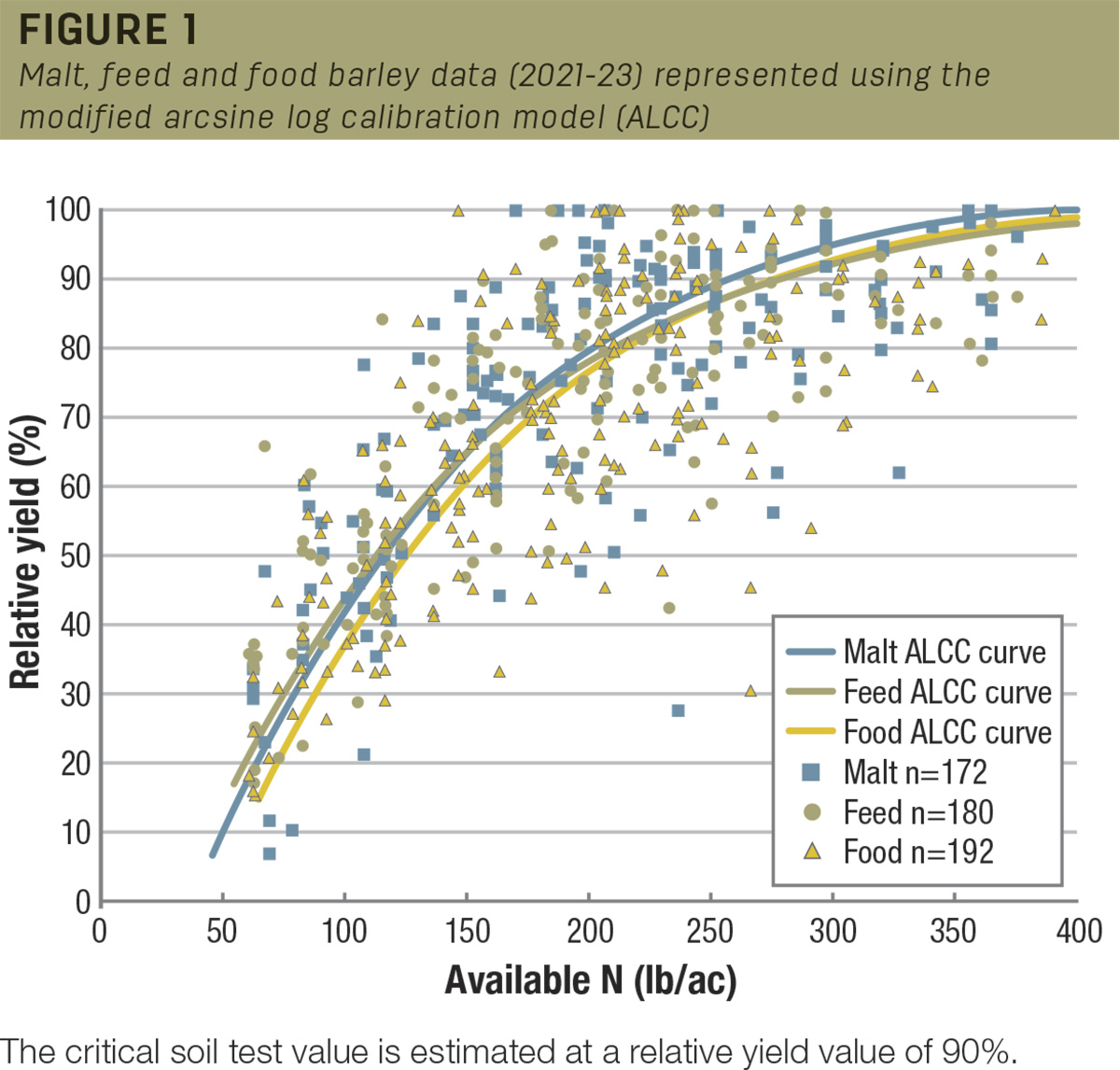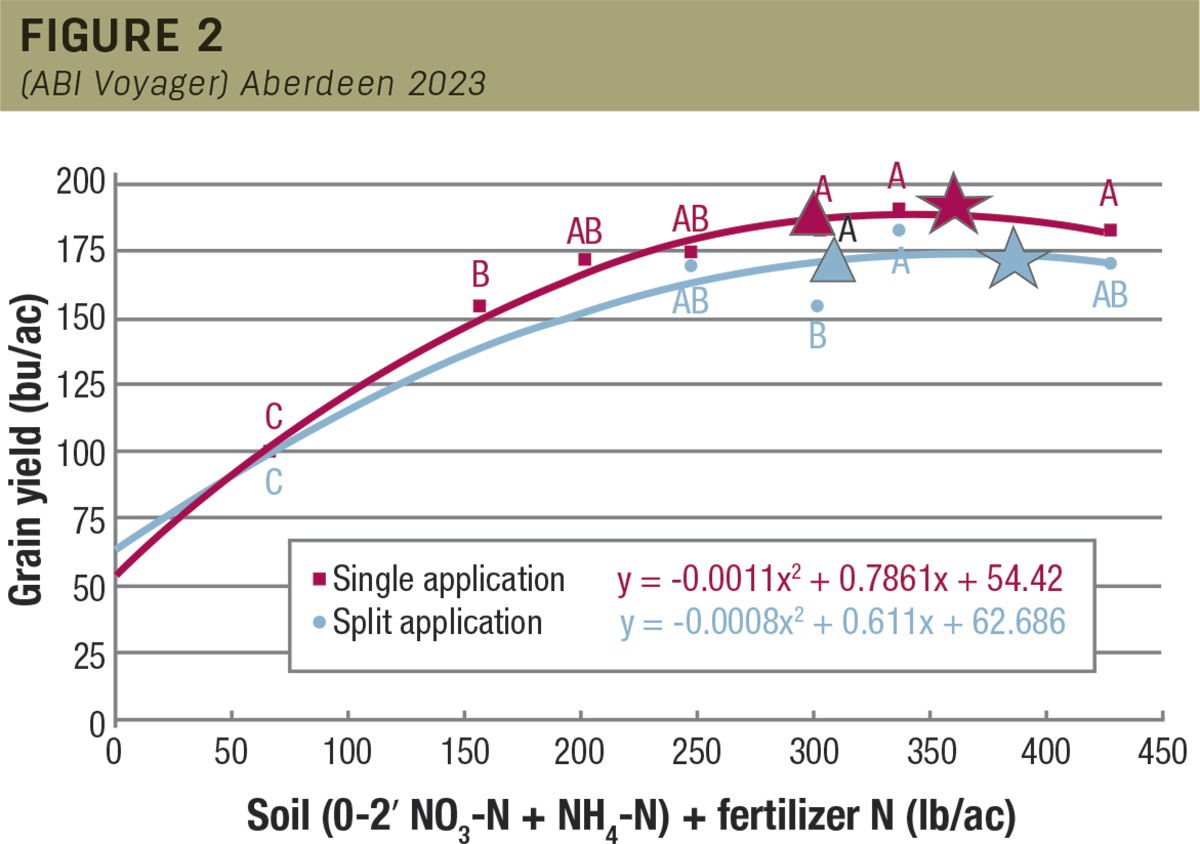This post was originally published on this site
Article Source: University of Idaho barley agronomy program update – nitrogen fertility - Ag Proud
The Idaho Barley Commission Endowed Barley Agronomy program has been researching sustainable barley and wheat production strategies, focusing on nutrient management practices for improved yield, quality, and soil and water health in both irrigated and dryland settings. A major objective of our program is to produce nutrient management data that can be used to update the University of Idaho’s barley and wheat production guides.
Since September 2020, the barley agronomy program has conducted various trials evaluating spring- and fall-seeded annual grasses as forage crops. Additionally, the program has conducted numerous irrigated and dryland trials assessing the response of malt, feed or food barley to different nitrogen (N), phosphorus, potassium, sulfur and micronutrient fertilization rates, sources and application timings. Currently, the program is conducting on-farm multiyear field trials evaluating precipitated calcium carbonate (sugarbeet lime) as a lime amendment for acidic eastern Idaho soils. For more information about any of these research projects, visit the university website or email me.
Research projects
- Spring malt, feed and hulless food barley yield and protein response to nitrogen and sulfur rates and application timing (2021-22: Aberdeen and Kimberly 2021, Aberdeen and Rexburg 2022)
- Active canopy sensors to prescribe in-season supplemental nitrogen for barley (2021-23: Aberdeen and Kimberly 2021, Aberdeen and Rexburg 2022, Aberdeen 2023)
The following are some of the key takeaways regarding nitrogen management for spring barley from our program’s research projects.
Yield goal approach
After water availability, N availability generally has the greatest impact on barley yield and grain quality. There are several approaches for estimating the optimal N rate for barley production. The University of Idaho currently uses the yield goal approach (see the “Idaho Spring Barley Production Guide”). In this method, barley N requirements are adjusted according to the yield growers can reasonably expect for their soil, environmental conditions and management practices. Historic yields are typically used as the baseline for estimating yield potential, but if you are going to grow a variety that is new to you, you could reference the Pacific Northwest University’s cereal variety trials datasets. Another resource is the Western Agricultural Variety Explorer website and phone app that compiled small-grain variety trial data from Idaho, Oregon and Washington. This resource will allow you to compare small-grain varieties across single or multiple locations. Currently, only wheat data are available but barley data will be available soon.
Once you have determined your realistic yield goal, the barley N requirement is calculated by multiplying the yield goal by a factor (approximately 1.1-2 pounds N per bushel for malt barley; about 1.7-2.3 pounds N per bushel for feed barley; approximately 1.1-1.4 pounds N per bushel for dryland barley). This barley N requirement is further adjusted by subtracting residual soil inorganic N measured from the top 2 feet of the soil at planting and by accounting for previous crop residues (see “Spring Barley Quick Facts”).

Modified arcsine log calibration model
Another approach is the modified arcsine log calibration model. This model is used in Australia, and we are investigating its usefulness for Idaho growers. In this model, individual sites’ yield and available N (fertilizer and 0- to 2-foot soil N at planting) response data are converted to a common scale (relative yield) and are combined with other site years of data to create a larger, more-representative dataset. Based on our irrigated spring barley data, this model estimates that across years and the sites evaluated, the optimal N rate (accounting for available soil N plus fertilizer N) for irrigated malt, feed and hulless food barley is 254, 278 and 274 pounds N per acre, respectively. Across all the datasets, this model predicts that each 1 bushel of barley grain requires 1.3-2.3 pounds N (malt), 1.4-1.8 pounds N (feed) and 1.9-2.9 pounds N (hulless food).

Regression analysis
The final approach we’ll address simply regresses yield against available N (at-planting soil N plus fertilizer N). The point at which yield is maximized (star) is the agronomic optimum N rate (AONR). In this example from Aberdeen in 2023, the AONR was 357 pounds N per acre, yielding 195 bushels per acre when the fertilizer was applied as a single application at planting. So 1.8 pounds of N per acre was required to produce 1 bushel per acre of grain.
Key findings
- When N is split applied as 40 pounds N per acre at planting, and the remainder is applied at late tillering, the AONR was 383 pounds N per acre, yielding 179 bushels per acre. So 2.1 pounds N per acre was required to produce 1 bushel per acre of grain.
- It is often not economically feasible to maximize yield because as you approach the AONR, each additional unit of N produces less yield. The economical optimal N rate (EONR, triangle) is estimated as the point at which the last unit of N returns a yield large enough to pay for an additional unit of N. This will fluctuate as the price of N and barley changes. In the current scenario, malt barley was valued at $7.50 per bushel and N was 83 cents per pound. This calculation does not account for the cost of applying the N fertilizer. If included, the EONR would move further to the left.
- The EONR for a single application at planting was 307 pounds N per acre, yielding 192 bushels per acre with an N-to-yield ratio of 1.6 pounds N per bushel. The EONR for a split application was 313 pounds N per acre, yielding 176 bushels per acre with an N-to-yield ratio of 1.8 pounds N per bushel.
- Across 42 site years of data in barley and wheat, split applying N at jointing on irrigated spring grains was either no different from or did not improve grain yield compared to a single application done at planting. In some instances, split applications reduced yield.
- Grain protein was 0.1-0.8 percentage points greater with a split application compared to a single application, except at the highest applied rates when the split application protein concentrations were 0.8-2 percentage points greater than a single application.
If there are specific research topics related to barley or wheat production that you would like the University of Idaho to address, please reach out to the author, other University of Idaho researchers or your county extension educator.
Idaho Grain Producers Association
“Our mission is to serve the grain producers of Idaho by representing their interests at the county, state and federal levels to enhance their profitability and long term viability.”
About IGPA
Representation
Send Us A Message
Contact Info
821 West State Street
Boise, Idaho 83702-5832
(208) 345-0706


